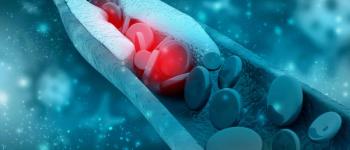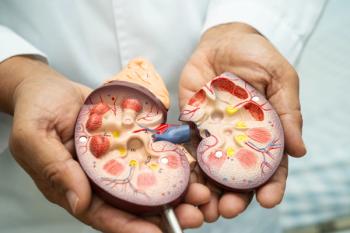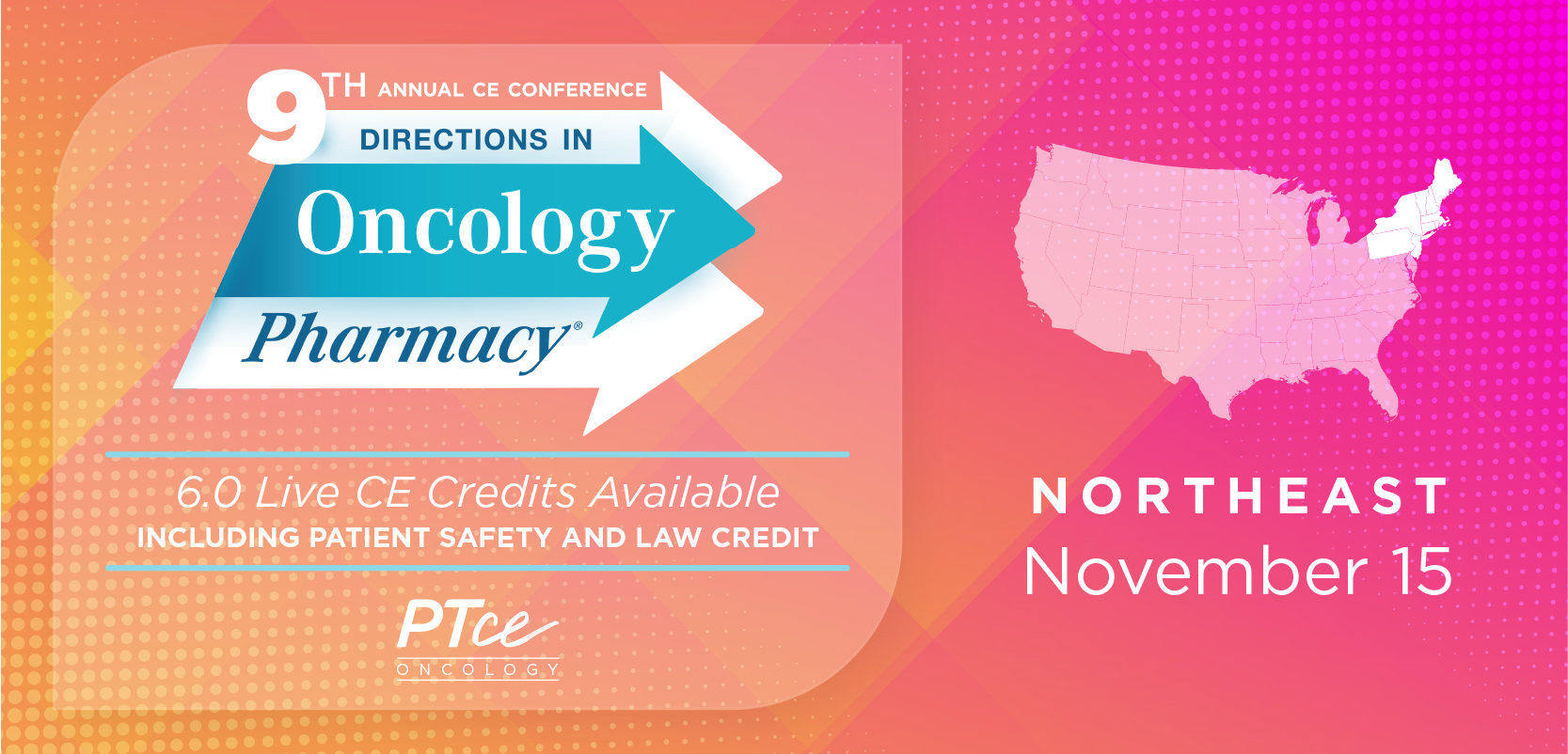
When to Call, When to Counsel: Statin Drug Interactions
Hydroxymethylglutaryl-CoA (HMG-CoA) reductase inhibitors, known in the US as "statins" or statin medications, are one of the most prescribed medication classes in the nation. With over 818 million prescriptions filled since 20081 and over 92 million people regularly taking statin medications as of 2019 in the US.2 Statins are widely prescribed to reduce the risk of cardiovascular-related morbidity and mortality associated with high cholesterol levels in the blood, especially low-density lipoprotein (LDL) cholesterol, and atherosclerotic plaque buildup that can lead to heart attacks and stroke.3
While statins are beneficial for risk-reduction with cardiovascular disease, they are also one of the most frequently flagged medications for drug-drug interactions.4,5 In the last decade, there has been an increased focus on high-intensity statin therapy due to minor plaque volume reduction, plaque stabilization, and prevention of plaque progression.4,6
In line with the 2022 U.S. Preventive Services Task Force (USPSTF) recommendations for primary prevention, statins are advised for adults aged 40 to 75 with ≥1 CVD risk factors (dyslipidemia, diabetes, smoking, etc.) and an estimated ASCVD score of ≥10%.7,8 Additionally, the recent PREVENT risk calculator provides an updated tool for estimating CVD risk across diverse populations, reinforcing the importance of personalized therapy selection.9 Due to their increased use and dosage intensity, the occurrence of drug-drug interactions and related adverse effects is inevitable.2,10,11
One of the most publicly recognized adverse effects associated with statin therapy is rhabdomyolysis. Rhabdomyolysis is a serious, potentially fatal condition that can arise from the use of many medications, not just statins, like antipsychotics, lithium, antidepressants, HIV medications, antifungal medications, antihistamines, colchicine, anesthetics, and illicit drugs.5-6
Rhabdomyolysis is when skeletal muscle integrity is compromised and the muscle cell contents, such as myoglobin and creatine kinase (CK), are released into the bloodstream. It becomes life-threatening when CK levels are extremely elevated (CK ≥10x upper limit of normal (ULN)), electrolyte imbalances occur, disseminated intravascular coagulation complications begin, and myoglobin accumulates in the renal tubules, leading to acute kidney injury (AKI) and potentially multi-organ failure.5,6
While statins are generally well tolerated, specific statins—lovastatin, simvastatin, and, to a lesser extent, atorvastatin—are more prone to drug interactions due to their metabolism by the Cytochrome P450 3A4 (CYP3A4) enzyme (Table 1).11,12 CYP3A4 interactions, while important to exercise caution with, do have degrees of metabolism depending on the individual medication and potentially the patient's genetics (i.e., renal or hepatic impairment or genetic predisposition, such as SLCO1B1 genetic variant, which reduces transporter activity, leading to higher circulating statin concentrations and a greater risk of adverse events).13-14 Additional factors that should influence clinical judgment on drug interactions are bioavailability, lipophilicity, the degree of CYP3A4 involvement or metabolism, and, if known, the pharmacogenomics of the patient.8,15,16
Medications with high lipophilicity, meaning they are predominantly "fat-loving", tend to have lower intestinal absorption (oral bioavailability); however, the concentrations of the medication that do make it into the bloodstream then distribute more into adipose or fatty tissues (increased volume of distribution). Being largely distributed into the adipose tissue increases the time medications are in the body, and the lipophilic nature can increase reabsorption in the kidneys, keeping the drug in the body longer (increasing elimination half-life). Therefore, when making clinical judgments with statins, taking into consideration not just how the medication is metabolized, but also how much gets into the body and how long it might stay there, is important to consider when thinking about drug accumulation and potential adverse effects, such as myopathy or rhabdomyolysis. In addition to this, taking the patient's body composition into account (higher BMI) and age (increases fat to the ratio of lean body mass and water) can also help in clinical recommendations.
While often typically not discussed in detail, it is important for pharmacists to remember that CYP enzymes are in two distinct areas of the body, the liver and the small intestine.The small intestine is an important “intestinal first-pass” of drug metabolism that can greatly vary the concentration of the medication that ends up in the blood. The prevalence of CYP3A4 in the intestine makes up about 80% of the CYP enzymes found in the intestines, while an additional 15% is that of CYP2C9. Therefore, intestinal first-pass metabolism should be of note for medications that are prodrugs or have a high degree of CYP3A4 metabolism. The concentrations of intestinal CYP3A4 vary in different areas of the small intestine, which may be applicable for patients with gastric bypass surgery and patients with intestinal resection.19
When Do We Call a Prescriber?
A pharmacist should contact a prescriber when a patient is prescribed a contraindicated drug combination or is at high risk for statin-induced adverse effects. Contraindicated combinations include statin medications in addition to strong CYP3A4 inhibitors (Table 2), which can significantly increase blood levels of the statin medication, leading to an increased risk for adverse effects.10,18,20 The most common drug classes that inhibit statin metabolism and increase the risk of adverse effects include azole antifungals, calcium channel blockers, macrolide antibiotics, cyclosporine11,21, amiodarone, protease inhibitors, and excessive grapefruit juice (>32oz/day) (Table 2).12,18,20-22 Gemfibrozil is also a concern because its active metabolite strongly inhibits the hepatic OATP1B1 transporter and, to a lesser degree, the CYP2C8 enzyme, leading to significantly increased statin plasma concentrations.11,21 Pharmacists must be vigilant in identifying these interactions to optimize therapy and prevent adverse outcomes.
What Do We Say to a Physician?
When contacting a physician regarding a statin interaction, provide the following information:
- Identify yourself and the patient, including the statin therapy prescribed and relevant medical history.
- State the interacting medication and why it poses a concern.
- Suggest alternative therapies or adjustments, considering the patient’s cardiovascular risk.
- Temporarily hold the statin until three days after completing the interacting medication in non-urgent cases.2,24
- Utilize the American College of Cardiology’s Statin Intolerance Tool to rule out true statin intolerance.25
- Consider switching to pravastatin, as CYP enzymes do not significantly metabolize it, and therefore, it is not subject to CYP interactions (Table 1).8,12,23
- Monitor patients closely with routine labs, especially in cases where discontinuation is not an option.11,26-27
- Ensure collaboration by discussing risk-benefit considerations and necessary patient monitoring. Indicate urgency: “possible rhabdomyolysis risk” if CK is very elevated or the patient has dark urine, renal impairment, etc.5-6,28
When Do We Counsel a Patient?
Patient counseling is essential in all cases of potential statin interactions, even if the physician decides to continue the interacting medication (see Table 3). It is important to note that some people notice mild muscle discomfort, weakness, or fatigue for the first 2-4 weeks after starting a statin; but these symptoms later resolve and are not universal.24,29 Some groups (older age, female sex, diabetes, renal impairment) may have a higher risk, as well as those with certain genetic factors (SLCO1B1 variants).13-14,30 Key counseling points include:
- Recognizing signs of myopathy and rhabdomyolysis, including muscle pain, weakness, dark-colored urine, and difficulty moving extremities.5,24,28
- Monitor for early symptoms of myopathy, such as muscle fatigue or difficulty rising from a seated position.
- The importance of adherence to statin therapy, as it significantly lowers cardiovascular risk. If symptoms occur, do not stop the medication on your own; contact your prescriber or pharmacist to discuss options.3,31
- Dietary considerations, including the avoidance of excessive grapefruit juice intake.17-18
What Do We Counsel the Patient On?
A substantial portion of reported statin-associated muscle damage may be non-pharmacologic (coincidental aches, did not tolerate activity well, etc.) Although less common, pharmacologically induced muscle damage is very real and clinically important.32 Patients should be informed about:
- Symptoms of statin-associated muscle damage:
- Myopathy: Muscle soreness, fatigue, and weakness that persist despite rest.24,32
- Rhabdomyolysis: Severe muscle pain (especially in the thighs, lower back, and shoulders), dark urine, nausea, confusion, and extreme weakness.5-6,28
- Steps to take if symptoms develop:
- Contact their healthcare provider immediately if they experience persistent muscle pain or dark-colored urine.
- Do not discontinue the statin without consulting a physician, as statins are crucial for reducing cardiovascular risk. They may adjust the dose, switch to a different statin with a lower risk of muscle damage (e.g., rosuvastatin or pravastatin), or try intermittent dosing.24,26,33 In some cases, a short-term trial of a different statin or lower dose can allow continued statin use with fewer symptoms.
- Report adverse effects to the FDA Adverse Event Reporting System (FAERS).
Conclusion
Statin therapy remains an essential component in the prevention of cardiovascular disease. While serious adverse muscle events are rare, they carry significant morbidity when they occur.35,36 Pharmacists, as accessible medication experts, can play a crucial role in balancing the benefits of statins with risk mitigation.9,11,27 By applying evidence-based thresholds (e.g., CK elevations, risk factors), clear communication strategies (what to say to prescribers), and consistent patient counseling (what symptoms to watch for, how to report them), pharmacists can reduce the incidence of serious statin‐related complications without undermining adherence. The potential impact of future research, which should evaluate which communication and education interventions most effectively translate into lower incidence of myopathy and improved adherence in real‐world settings, is promising and can further optimize statin therapy.
REFERENCES
1. Cleveland Clinic. Statins. Updated January 24, 2022. Accessed October 17, 2025. https://my.clevelandclinic.org/health/treatments/22282-statins
2. Matyori A, Brown CP, Ali A, Sherbeny F. Statins utilization trends and expenditures in the US before and after the implementation of the 2013 ACC/AHA guidelines. Saudi Pharm J. 2023;31(6):795-800. doi:10.1016/j.jsps.2023.04.002
3. Abd TT, Jacobson TA. Adherence to statin therapy and risk reduction. Expert Opin Drug Saf. 2011;10(6):825-836. doi:10.1517/14740338.2011.588516
4. Nikolic D, Banach M, Chianetta R, et al. An overview of statin-induced myopathy and perspectives for the future. Expert Opin Drug Saf. 2020;19(5):601-615. doi:10.1080/14740338.2020.1747431
5. Farkas J; EMCrit Project. Rhabdomyolysis. Updated July 4, 2024. Accessed October 17, 2025. https://emcrit.org/ibcc/rhabdo/
6. Huerta-Alardín AL, Varon J, Marik PE. Bench-to-bedside review: Rhabdomyolysis—an overview for clinicians. Crit Care. 2005;9(2):158-169. doi:10.1186/cc2978
7. American College of Cardiology. Statin Intolerance. Accessed October 17, 2025. https://tools.acc.org/statinintolerance/#!/
8. Climent E, Benaiges D, Pedro-Botet J. Hydrophilic or lipophilic statins? Front Cardiovasc Med. 2021;8:687585. doi:10.3389/fcvm.2021.687585
9. American Heart Association. PREVENT™ Online Calculator: Predicting Risk of Cardiovascular Disease Events. 2023. https://professional.heart.org/en/guidelines-and-statements/prevent-risk-calculator
10. Wiggins BS, Saseen JJ, Page RL 2nd, et al; American Heart Association Clinical Pharmacology Committee of the Council on Clinical Cardiology; Council on Hypertension; Council on Quality of Care and Outcomes Research; Council on Functional Genomics and Translational Biology. Recommendations for management of clinically significant drug–drug interactions with statins and select agents used in patients with cardiovascular disease: a scientific statement from the American Heart Association. Circulation. 2016;134(21):e468-e495. doi:10.1161/CIR.0000000000000456
11. Newman CB, Preiss D, Tobert JA, et al. Statin safety and associated adverse events: a scientific statement from the American Heart Association. Arterioscler Thromb Vasc Biol. 2019;39(2):e38-e81. doi:10.1161/ATV.0000000000000073
12. Medsafe. Statins and CYP interactions. Accessed October 17, 2025. https://www.medsafe.govt.nz/profs/PUArticles/March2014StatinsAndCYPInteractions.htm
13. Warden BA, Guyton JR, Kovacs AC, et al. Assessment and management of statin-associated muscle symptoms (SAMS): a clinical perspective from the National Lipid Association. J Clin Lipidol. 2023;17(1):19-39. doi:10.1016/j.jacl.2022.09.001
14. Peyser B, et al. Impact of SLCO1B1 genotype on statin intolerance: a randomized controlled trial. Circ Genom Precis Med. 2018;11(3):e002320.
15. Arnott JA, Planey SL. The influence of lipophilicity in drug discovery and design. Expert Opin Drug Discov. 2012;7(10):863-875. doi:10.1517/17460441.2012.714363
16. Ward NC, Watts GF, Eckel RH. Statin toxicity. Circ Res. 2019;124(2):328-350. doi:10.1161/CIRCRESAHA.118.312782
17. Medsafe. Statins and CYP interactions. Prescriber Update. March 2014.
18. Medsafe. Drug–drug interactions involving CYP3A4 and statins. Prescriber Update. March 2014.
19. Medsafe. Drug metabolism—the importance of cytochrome P450 3A4. Accessed October 17, 2025. https://www.medsafe.govt.nz/profs/puarticles/march2014drugmetabolismcytochromep4503a4.htm
20. Zhou YT, Yu LS, Zeng S, et al. Pharmacokinetic drug–drug interactions between 1,4-dihydropyridine calcium channel blockers and statins: factors determining interaction strength and relevant clinical risk management. Ther Clin Risk Manag. 2014;10:17-26. doi:10.2147/TCRM.S55512
21. Indiana University School of Medicine. Drug Interaction Table. Accessed October 17, 2025. https://drug-interactions.medicine.iu.edu/main-table
22. Zhou YT, Yu LS, Zeng S, Huang YW, Xu HM, Zhou Q. Pharmacokinetic drug-drug interactions between 1,4-dihydropyridine calcium channel blockers and statins: factors determining interaction strength and relevant clinical risk management. Ther Clin Risk Manag. 2014;10:17-26. doi:10.2147/TCRM.S55512
23. Sathasivam S, Lecky B. Statin-induced myopathy. BMJ. 2008;337:a2286. doi:10.1136/bmj.a2286
24. Warden BA, Duell PB. Assessment and management of statin-associated muscle symptoms (SAMS): a clinical perspective from the National Lipid Association. J Clin Lipidol. 2018;12(1):77-87.
25. American College of Cardiology. Statin Intolerance Tool. 2022. https://tools.acc.org/statinintolerance/#!/
26. Warden BA, Guyton JR, Kovacs AC, et al. Assessment and management of statin-associated muscle symptoms (SAMS): a clinical perspective from the National Lipid Association. J Clin Lipidol. 2023;17(1):19-39. doi:10.1016/j.jacl.2022.09.001
27. Warden BA, Guyton JR, Kovacs AC, Durham JA, Jones LK, Dixon DL, et al. Assessment and management of statin-associated muscle symptoms (SAMS): a clinical perspective from the National Lipid Association. J Clin Lipidol. 2023;17(1):19-39. doi:10.1016/j.jacl.2022.09.001
28. EMCrit Project. Rhabdomyolysis—Internet Book of Critical Care (IBCC). Accessed 2024. https://emcrit.org/ibcc/rhabdo/
29. Iatan I, Mancini GBJ, Yeoh E, Hegele RA. Statin-associated muscle symptoms (SAMS): strategies for prevention, assessment and management. Expert Rev Cardiovasc Ther. 2023;21(6):423-435. doi:10.1080/14779072.2023.2215982
30. Nguyen KA, et al. A comprehensive review and meta-analysis of risk factors for statin-induced myopathy. Atherosclerosis. 2018;275:62-68.
31. Abd TT, Jacobson TA. Adherence to statin therapy and risk reduction. Expert Opin Drug Saf. 2011;10(6):825-836. doi:10.1517/14740338.2011.588516
32. Stone NJ, Robinson JG, Lichtenstein AH, et al. 2013 ACC/AHA guideline on the treatment of blood cholesterol to reduce atherosclerotic cardiovascular risk in adults. J Am Pharm Assoc (JAPhA). 2013;63(25):e1. doi:10.1016/j.jacc.2013.11.002
33. US Preventive Services Task Force. Statin use for the primary prevention of cardiovascular disease in adults: US Preventive Services Task Force recommendation statement. JAMA. 2022;328(8):746-753.
34. American Heart Association. 2016 ACC Expert Consensus Decision Pathway on the role of non-statin therapies for LDL-C lowering. J Am Coll Cardiol. 2016;68(1):92-125.
35. Nguyen KA, Li L, Lu D, et al. A comprehensive review and meta-analysis of risk factors for statin-induced myopathy. Eur J Clin Pharmacol. 2018;74(9):1099-1109. doi:10.1007/s00228-018-2482-9
36. US Preventive Services Task Force. Statin use for the primary prevention of cardiovascular disease in adults: preventive medication. Updated August 23, 2022. Accessed October 17, 2025. https://www.uspreventiveservicestaskforce.org/uspstf/recommendation/statin-use-in-adults-preventive-medication
Newsletter
Stay informed on drug updates, treatment guidelines, and pharmacy practice trends—subscribe to Pharmacy Times for weekly clinical insights.


















































































































































































































